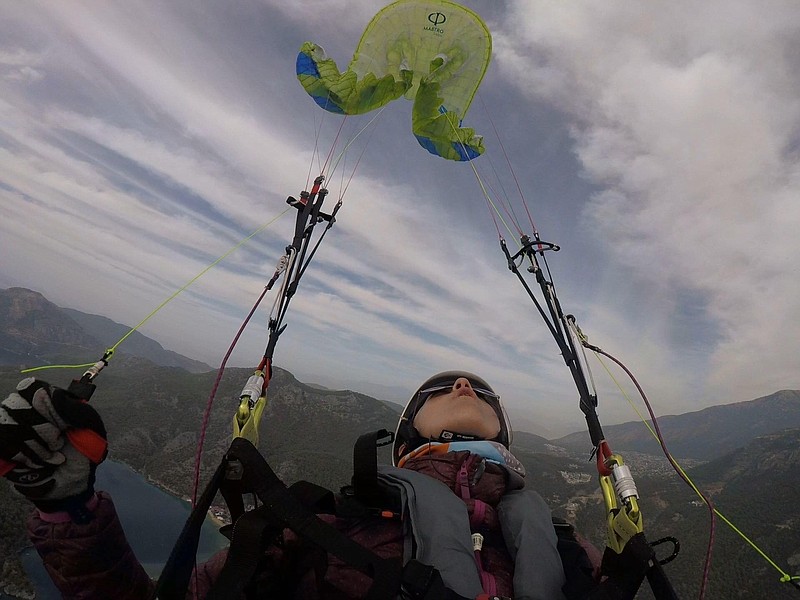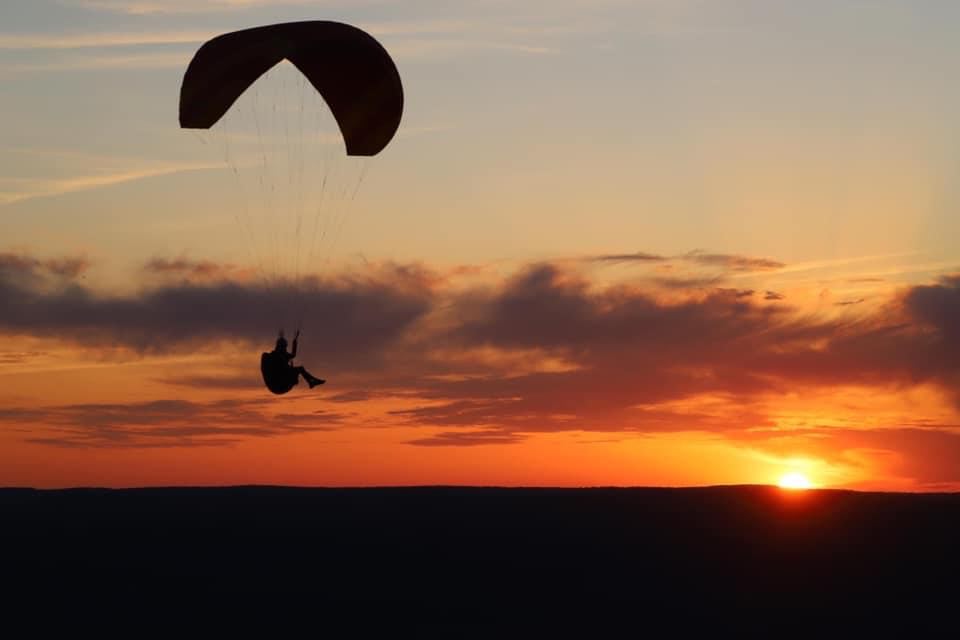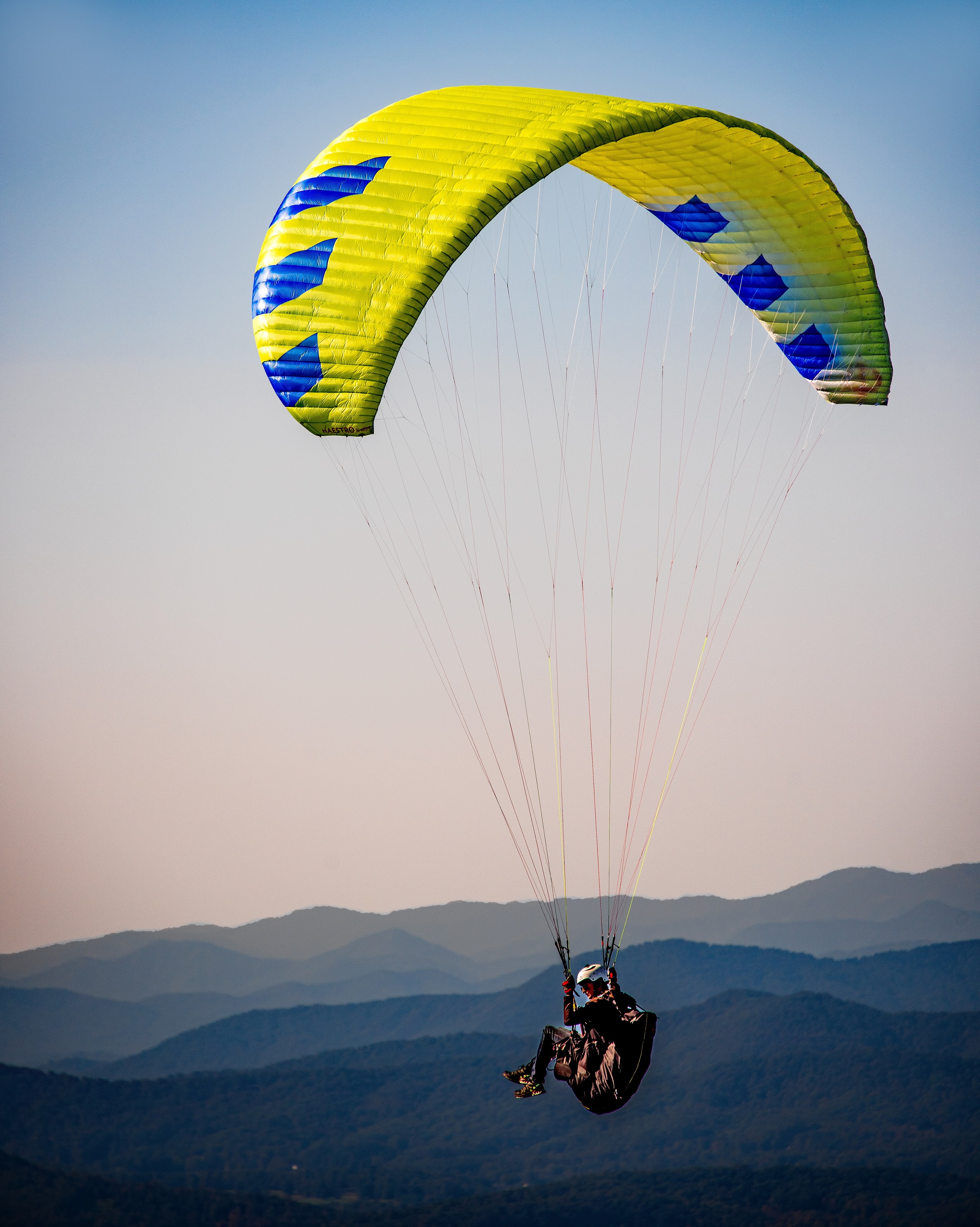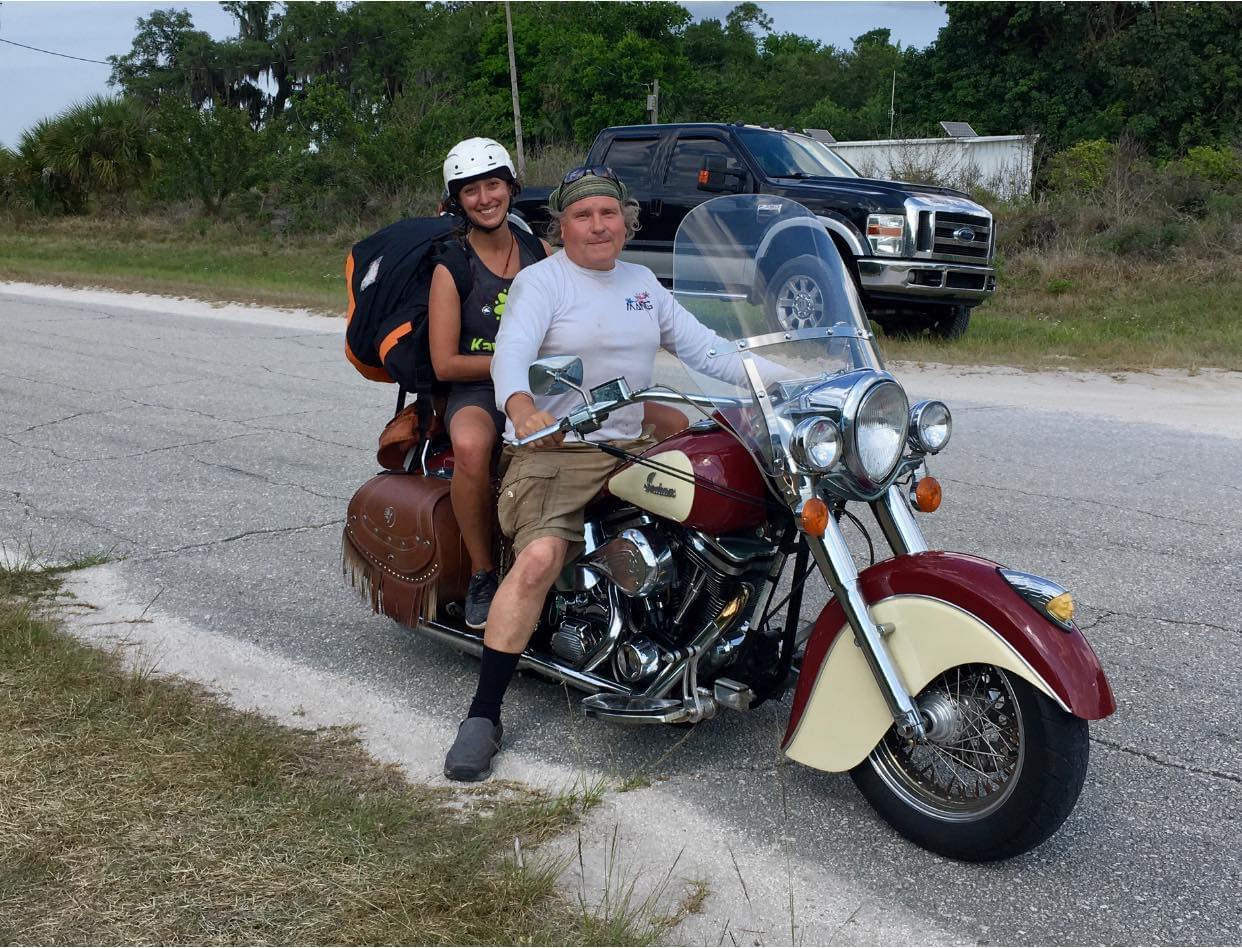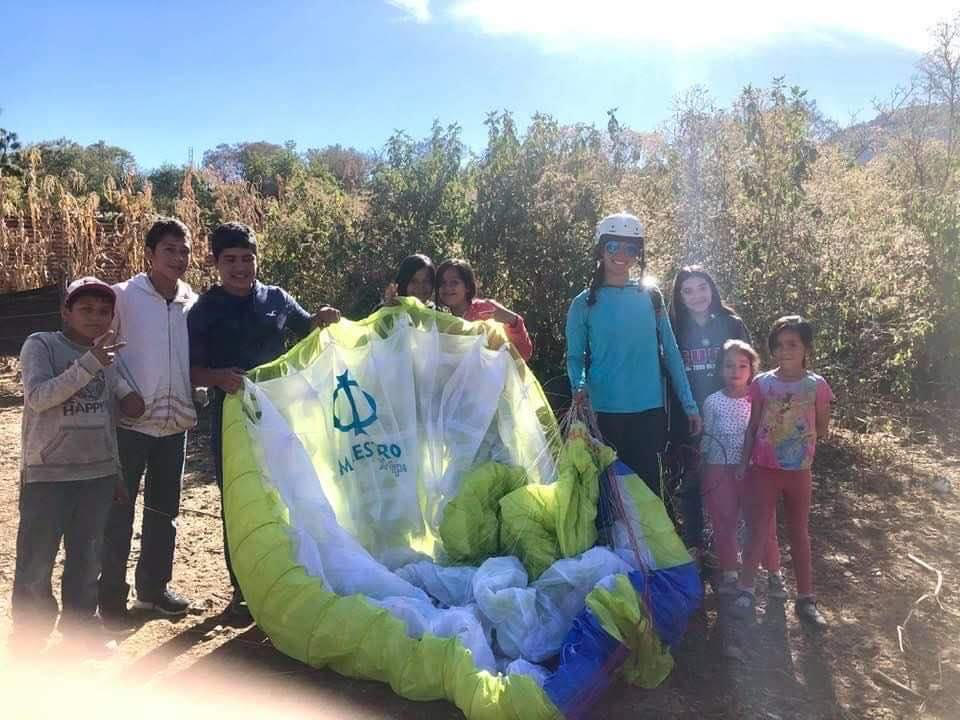Melissa Hickson is not a thrill-seeker.
She does not throw herself off waterfalls or mountains for the rush of it.
"If I feel adrenaline," she says, "it's because something has gone wrong," the 30-year-old adventurer says.
Born and raised in Cleveland, Tennessee, Hickson began kayaking at age 24. Not long after, she became a raft guide on the Ocoee River, then a kayak instructor, ultimately leading her to spend winters in Chile guiding whitewater trips through the Andes Mountains.
In 2018, after a trip on the Maipo River, Hickson remembers watching one of her fellow guides take off his backpack and "unfold what looked like an over-engineered grocery bag attached to some shoelaces," she says.
The sun was setting as he suited up and launched himself off the mountain, disappearing into the fiery sky.
"It was the most beautiful thing I'd ever seen. That was the moment I decided to become a paraglider," Hickson says.
But that same year, Hickson injured her back while kayaking Patagonia's Class IV-plus Futaleufu River. After taking nearly a year to recover, in early 2020, she finally obtained her paragliding pilot certification through Flying Camp in Tennessee's Sequatchie Valley.
Unlike hang gliding, where pilots lie horizontally beneath a framed kite and use their body to turn, paragliders sit upright in a harness and use their hands to maneuver the chute.
Over the course of about two months, Hickson learned how to control her wings and took her first launch from the camp's 350-foot training hill. Her landing that day wasn't perfect. After skidding to a stop on her butt, for a moment, Hickson felt paralyzed - but not due to the impact.
"I was euphoric," she says. "Every cell in my body was vibrating with happiness."
Hickson has always approached her passions with fervor. As a child, it was horses; in her 20s, motorcycles, then whitewater.
"When I find something I love, I go after it. I'm not trying to compete with anyone, including myself. I just want to do the thing I love as much as I can," she says.
That summer, Hickson would practice keeping her craft in the air for as long as possible.
To do so, pilots must learn to read the landscape, identifying the best terrain for rising currents of warm air, known as thermals. These are created when the sun heats the ground, creating a "bubble" of hot air at the Earth's surface.
"At some point, it will float up into the atmosphere, and you can climb it like a spiral staircase up to the clouds," Hickson says.
Less than six months after becoming a pilot, in November, she bought a plane ticket and traveled to Turkey to meet up with a friend in Ölüdeniz, a paraglider's paradise. Overlooking the Mediterranean Sea, the city features a 6,000-plus-foot launch, making it famous to paragliders practicing acrobatics and SIV, or simulated incident in flight, which involves a pilot intentionally making the wings malfunction, then learning to correct mid-flight.
"You can initiate maneuvers such as stalls, spins, collapses and spiral dives," Hickson explains. "You have on a [personal flotation device] that will inflate if you hit the water. So you can do things that are high risk and practice your techniques in a controlled environment."
During that trip, she fortuitously connected with a group of Romanians who were taking a SIV skills course from world-renowned acrobatic paraglider Calin Popa. The skills she learned that day would prove critical before the winter was over.
After Turkey, Hickson traveled back across the Atlantic to Valle de Bravo, one of Mexico's most popular paragliding towns. The wind conditions there are notoriously unpredictable, and Hickson had been warned to watch out for "dragons," a term sometimes used to describe turbulence caused by powerful thermals and rugged landscape.
"On day three, I met a dragon in the sky," she says. "My wing shot up and I saw it crumple. I felt my body falling backwards. Then I heard Calin's voice telling me what to do."
She managed to right her wing.
"I don't know if that (SIV) course saved my life, but it definitely saved my day," she says.
But physical skills are only part of mitigating risk in adventure sports. "The rest is mental," says Hickson.
Good sense and awareness are the keys to staying safe, she says - and that applies to her travels, too, which have taken Hickson into remote regions around the world.
When she arrived in Turkey last November, it was her first time visiting a Muslim-majority country.
"I tried to dress modestly. I covered my shoulders and wore long pants when outside of the main tourist zone and covered my hair in places of religious significance."
And she knew to avoid the eastern border due to conflict. "You have to be smart and culturally aware," she says.
Solo travel for a woman is not necessarily more difficult, says Hickson, "It's just different. We are seen as more vulnerable. So, you have to pay attention to get a read on people. But we're also not seen as a threat. If I need help, I can walk up to anyone and they won't be afraid of me."
And there were plenty of times she did need help, mostly while making her way back to town following a flight.
"You don't always get to choose your landing site, so the adventure isn't over when you land. You can end up in some pretty out-of-the-way places," says Hickson, who, over the course of her travels, hitched rides with dump trucks, ice cream trucks and swamp buggies, her chute neatly folded on her lap.
"We see these places on the news and we have ideas of them being dangerous," she says. "But we have to remember, these places are filled with human beings."
Once, on the outskirts of Tapalpa, Mexico, Hickson remembers descending into a field of tall grass as a group of children ran toward her.
"They'd never seen a paraglider before. I'm like an alien coming out of the sky," she says.
When she landed, the giggling children bombarded her: Who was she? Where did she come from? How did she make it fly?
Because Hickson speaks Spanish, she could answer their questions, and she hopes the encounter helped broaden their dreams, especially those of the little girls in the group.
"People accuse me of being an adrenaline junkie," she says. "But I'm adamant that I'm not."
For Hickson, it is about deeper connection - to both places and the moment.
In both kayaking and paragliding, "You have to be fully present," Hickson says, remembering what her instructor at Flying Camp once told her:
"Launchings are optional; landings are mandatory."
And in between, "You have to find that flow state," says Hickson. "My favorite feeling in kayaking is peeling out of an eddy above a waterfall. You've spent all this time studying your skills, the water level, your safety team. But when you peel out, all of that fades away. Now you're in it. This is what's real."
